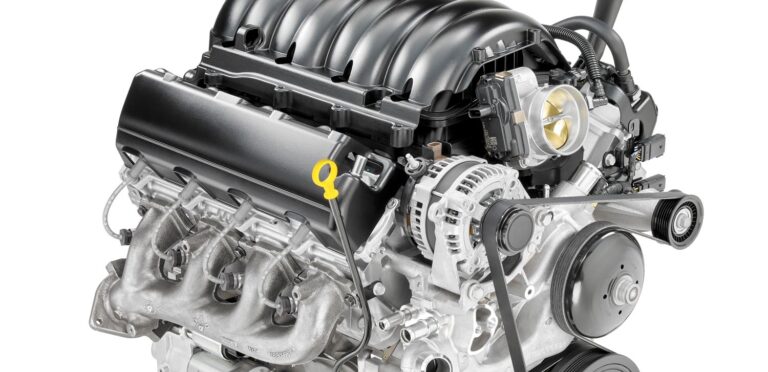The 2019 Chevrolet Silverado 1500 will be offered with an all-new 2.7-liter four-cylinder turbo and updated versions of the existing 5.3 and 6.2-liter pushrod V8, which now feature cylinder deactivation.
The 2.7 inline-four puts out 315hp and 472Nm between 1,500rpm and 4,000 rpm. These figures are up significantly from the 289hp and 414Nm of the 4.3-liter, naturally aspirated V6 that the four-cylinder replaces as the base engine on LT and RST trim levels.
Chevrolet says it was a clean-sheet design that was developed from the start as a truck engine, with a long, 102mm stroke. Regardless, fitting a four-cylinder to a full-size pickup truck is still a brave move when its competitors, the Ford F150 and Ram 1500, stick with V6s as their base engines.
The engine is a DOHC design with variable valve timing, direct injection and a 10.0:1 compression ratio. It features an electric water pump and a dual volute turbocharger housing, which Chevrolet claims improves throttle response and low-speed torque.
In addition, the new 2.7 has an integrated exhaust manifold that is part of the cylinder head assembly and recovers exhaust heat for faster engine and transmission warm-up, with quicker turbo response.
The offset crankshaft allows a more upright position for the connecting rods during their movement to decrease the load of the pistons against the cylinder walls. The connecting rods and crankshaft themselves are made of forged steel, while the pistons are aluminum alloy with a cast iron ring groove insert. The block and cylinder head are aluminum, too.
V8 engines remain available, however, as does an inline-six diesel, while the old 4.3-liter V6 will still feature on some versions of the Silverado. Like the new 2.7, the familiar 5.3 and 6.2-liter now feature cylinder deactivation – or ‘Dynamic Fuel Management’, as Chevrolet calls it – despite their traditional overhead valve architecture.
The V8s with cylinder deactivation can operate in 17 different cylinder patterns to optimize power delivery and efficiency, switching between eight- and four-cylinder modes. An electromechanical system deactivates and reactivates all 16 of the engine’s hydraulic valve lifters, controlling valve actuation.
The system uses solenoids to deliver oil pressure to control ports in the lifters, which activate and deactivate the lifters’ latching mechanisms. When a cylinder is deactivated, the two-piece lifters effectively collapse on themselves to prevent them from opening the valves.
When it is reactivated again, solenoids send an oil pressure signal to the control ports on the lifters and the latching mechanism resumes normal function, allowing the valves to open and close.
The new 2.7 and the 5.3 V8 come coupled to an eight-speed ‘hydramatic’ automatic transmission, while the 6.2 benefits from a ten-speed.


